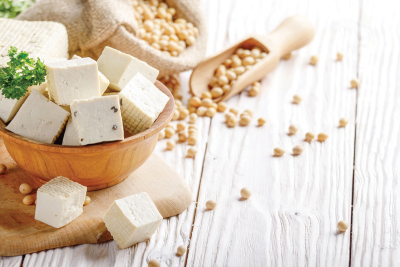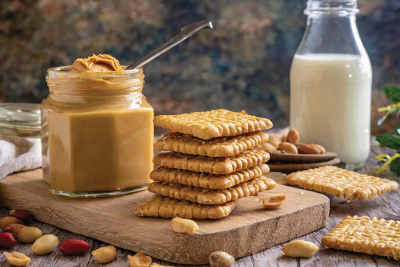Thanksgiving in the mountains: Memories and food from the past
By Karen Dill • Special to the Smoky Mountain News
My memories of Thanksgiving in the mountains are of simple seasonal foods spread on a rough plank table in my mother’s old home place in Madison County. My mother’s people, the Treadways and the Sawyers, were raw, hard-working clans with bodies long and lean and spirits naturally suspicious of outsiders. Their hands were calloused and bodies worn from back-breaking work in the fields; their faces like Dorothea Lange photographs weathered from days spent outdoors and worn with constant worry of survival in the wilderness that they called home.
Life in the back coves and hollows of the mountains was hard and still primitive in the late ‘50s. My relatives in Madison County were without electricity until 1963. In those first Thanksgivings of my childhood, the food was all grown locally and prepared over wood stoves. The smell of food cooked over firewood in the cold dry mountain air of November is forever etched in my memory.
The Madison County relatives were generally a somber bunch from the Pentecostal Church. Although they tended to believe that God was a wrathful fellow, their demeanor softened on Thanksgiving Day and they gave praise to His goodness. The strict discipline necessary for survival in this harsh life was lifted for a day and there was a sense of gaiety and rejoicing in the air, as the living relatives and spirits of the dead were joined together again.
The foods served on those first Thanksgivings of my memory were never store-bought. They were grown and preserved on the same land and in the same house where my mother and her siblings were all born. The cured ham was the best piece of pork from the hog slaughtered in the fall. The turkey — a wild one — was shot by my grandfather and uncles on suspicious hunting trips taken in the days before Thanksgiving in which moonshine was consumed and arguments followed. More times than not, the ragamuffin hunting party returned early on Thanksgiving Day, eyes bloodshot and blackened, staggering into the yard with a puny bird that had been dragged through the dirt for several miles. They were met with both righteous indignation and knowing sighs.
After a few years of the sordid turkey hunt, my mother and the aunts simply bought the bird at a grocery store and prepared it in their own electric ovens. The bird was wrapped in tin foil, placed in a cardboard box and carried in the back of a pick-up truck to the dinner. Despite the effort, the turkey was never the main attraction at those early Thanksgivings. He was an interloper, a visitor tolerated but never part of the family, pushed aside for the more popular ham and vegetables. My uncles, awkward and sober (for the moment) in their flannel shirts and overalls, never warmed up to the store-bought intruder and they eyed him as warily as the Florida tourist as they headed for the side dishes.
Related Items
The side dishes of the early mountain Thanksgiving dinners were testament to the ingenuity and thrift of the Appalachian people. My father’s family hailed from the Bethel community of Haywood County and their dishes were much the same as my Madison county relatives. The dishes were created from foods found in the root cellars, the smoke houses, spring houses and canning sheds — all structures that were essential to the survival of the mountain family. Thanksgiving was a unique day when all of the foods were presented at once and served with pride and generosity. It was a celebration of gratitude; it was a day when good food and generosity reigned.
My great-aunt Lucinda would lead the Thanksgiving prayer in true Pentecostal style. It seemed to go on forever and was punctuated with heavy gasps and an occasional speaking of tongues. I dared not open my eyes as my great-aunt was a fierce woman who had raised my mother and her siblings after their mother died, and she suffered no fools. I had just last summer witnessed this tiny woman wring a hen’s neck with one hand and casually chop off the head of a copperhead snake that had strayed too close to the woodpile in a single blow. Without taking a breath, she gave thanks to God (who hopefully understood the Pentecostal tongue) for the spring that had not gone dry, general good health that was not aided by physicians, a decent crop of tobacco — the only cash crop, and the fellowship of family. The dead, resting in the family cemetery on the hill with graves marked by crude field rock, were named and their virtues extolled.
As soon as the food was blessed and amens were shouted, the side dish parade began with cornbread dressing and pan gravy served in chipped earthenware and metal plates. Mashed potatoes as well as boiled sweet potatoes swimming in butter made an annual appearance. Leather britches, aka shucky beans, were always on the old plank table as well as pickled green beans and corn. The corn field beans picked from the corn rows in the garden had been strung with white string and hung from the rafters of the can house beside the long strings of dried apples. Another mess of green beans along with kernels of corn was pickled, much like sauerkraut, in large crocks.
Sauerkraut from an earthenware crock was always present at these meals, and I was given the treasured pickled core of the cabbage to munch on while the cousins grimaced. The sauerkraut was pan fried in some fatback grease and was the perfect complement to the boiled-in-butter sweet potatoes. The greens, freshly picked from the winter garden, were collard or turnip and were also fried in the fatback grease. Even the healthiest foods could clog arteries after the mountain women had “doctored them up.”
Another of my favorite foods found at the wonderful table was hominy. The hominy had been created from corn boiled in lye water in the cast iron pot over a big fire built in the front yard. My grandparents made lye by using ashes taken from the fireplace and placed in a piece of hollow log. The log slanted downward and water was poured repeatedly over the ashes and caught in a wooden bucket. The remaining lye water was used to make hominy and homemade soap. The dry corn kernels were cooked slowly and soaked in the lye water until the skin came off and the kernels swelled. The kernels were then washed many times until the lye was removed and stored in a crock. I always loved the story of this transformation. It had an almost biblical symbolism — the kernels cleansed of their earthly skin and transformed to heavenly white. I felt as if I were truly eating manna from Heaven on those occasions, though I doubt that the heavenly chefs fried their hominy in, yes, fatback grease for flavor. Though the leather britches and fried kraut have been dropped from my own Thanksgiving spread, the hominy, in various incarnations, has remained a staple as the years have passed.
The Thanksgiving spread would not be complete without breads and desserts. Cornbread and biscuits served with butter and molasses were always present. Applesauce, apple butter and fried dried apples were served with the meats and the breads and could have easily made a regal dessert. Yet the pumpkin pies and apple stack cake were to follow. Served with steaming hot coffee, slices of pumpkin pies made from pumpkins grown in the fall garden and delicious slices of stack cake made with molasses and dried apples would prove to be the family’s undoing. After many groans and protests, the women headed to the kitchen to wash dishes in the metal wash pan filled with water heated on the wood stove, and the men (if they were still able to move) shuffled outside to smoke cheap cigarettes and pitch horseshoes. Eventually the family would all gather around, flushed with the warmth from the woodstove and sated with good food.
Sitting on the front porch or around the fire built in the front yard for this occasion, stories were told while guitars and banjos were strummed. My great-aunt Lucinda, who had led the Thanksgiving prayer, would also allow herself to be swayed by the mountain tunes and in spite of herself would tap her boot-clad feet from beneath her long skirt in time with the music. A few of the men would wander back to the woodshed to smoke and sip a bit of moonshine or hooch. As they returned, the music would become more raucous and the women, wise from lessons of past experience, would round up the children and make plans to disperse quietly into the late afternoon chill. We would then head up the hill to the family cemetery.
As haunting tunes from banjos and guitars echoed in the hollow, we walked slowly and reverently up the hill, our bellies full of grease-laden food. A chilly wind would blow off of the French Broad River below, and we would huddle together for warmth. I would hear the story of my grandmother’s sudden passing at age 27 from my mother and aunts. I would listen to the sadness in their voices as they described the hardships of life without a mother and their subsequent searches for love in all of the wrong places.
As the years have passed and my great-aunt Lucinda died, Thanksgivings were held at various other houses with electricity and even more of the suspicious store-bought foods. The butterball turkey made his debut and claimed his rightful head of the Thanksgiving table once again. Dressing (never called stuffing in the mountains) was introduced in various forms — some years with sausage, apples, pecans and the occasional oyster. Plain cornbread dressing with sage dried from my herb garden (no eggs or giblets and a ton of butter) is now the popular choice. My Aunt Marie’s macaroni and four-cheese casserole as well as her sweet potato casserole with pecans and little marshmallows are always hits. My mother’s green bean casserole was popular for a few years, then it sadly went by the way of the congealed salads. Leather britches and pickled corn and green beans are only memories that I relate to my doubtful children, who always question why we couldn’t just buy a frozen bag of vegetables or open a can. We now prefer succotash (corn and lima beans) and a variety of roasted vegetables.
I still serve the faithful mashed potatoes, collard greens cooked with sautéed onions, bacon bits, a pinch of sugar and vinegar, pan gravy, pumpkin pie, and occasional stack cake (when I’m feeling ambitious) and a new twist to the old hominy dish. I still brown the ivory nuggets with bacon bits but add black beans, chopped onion, a can of Rotel tomatoes and chilies, garlic, cumin and a bunch of chopped cilantro. My daughter brought her California influence to the dish with shredded Monterey Jack cheese and a dollop of sour cream. The hominy dish is still evolving, and as our world gets smaller with media and travels, our dishes reflect the blending of cultures.
We still share memories of past Thanksgivings as my husband contributes real Southern foods from his native August, Ga. My nephew’s wife contributes food from her native Chile. My son brings Cuban pork from Tampa, and it fits well with the old mountain dishes. Instead of moonshine and cigarettes, we sip microbrews and California wine from my daughter’s home in Mendocino and smoke the occasional Cuban flavored cigar from Ybor City.
Our old farmhouse in Webster has become the setting for Thanksgiving meals now. My aunts have taken co-starring roles in the family productions, and my cousins and I have stepped up to the lead roles. I feel that I am being groomed for the role of family matriarch, the menu planner, the organizer of meals to come. I try to look wise these days and with graying hair and wrinkles, I am beginning to look the part.
We still share moments of gratitude as we gather around the spread of food on the crocheted tablecloth. We’re still relatively healthy; our nation is miraculously led by a remarkable man of color; we are hopeful about the future of our family and our country. My mother passed away last year, and though we cannot hike to the old family graveyard and visit the spot between her mother and fathers’ gravestones where her ashes were spread, we will remember her.
I will remember the old plank table in a chilly old house far from trappings of modern life laden with mountain foods that reflect the lives of a simpler and harder existence. Though the mountains have changed with encroaching development and gated communities, our food, its taste and its aroma, still connect us with a time past. The spirit of Thanksgiving and the food that connects us with the past will live on in our memories and in the new memories that we create.










